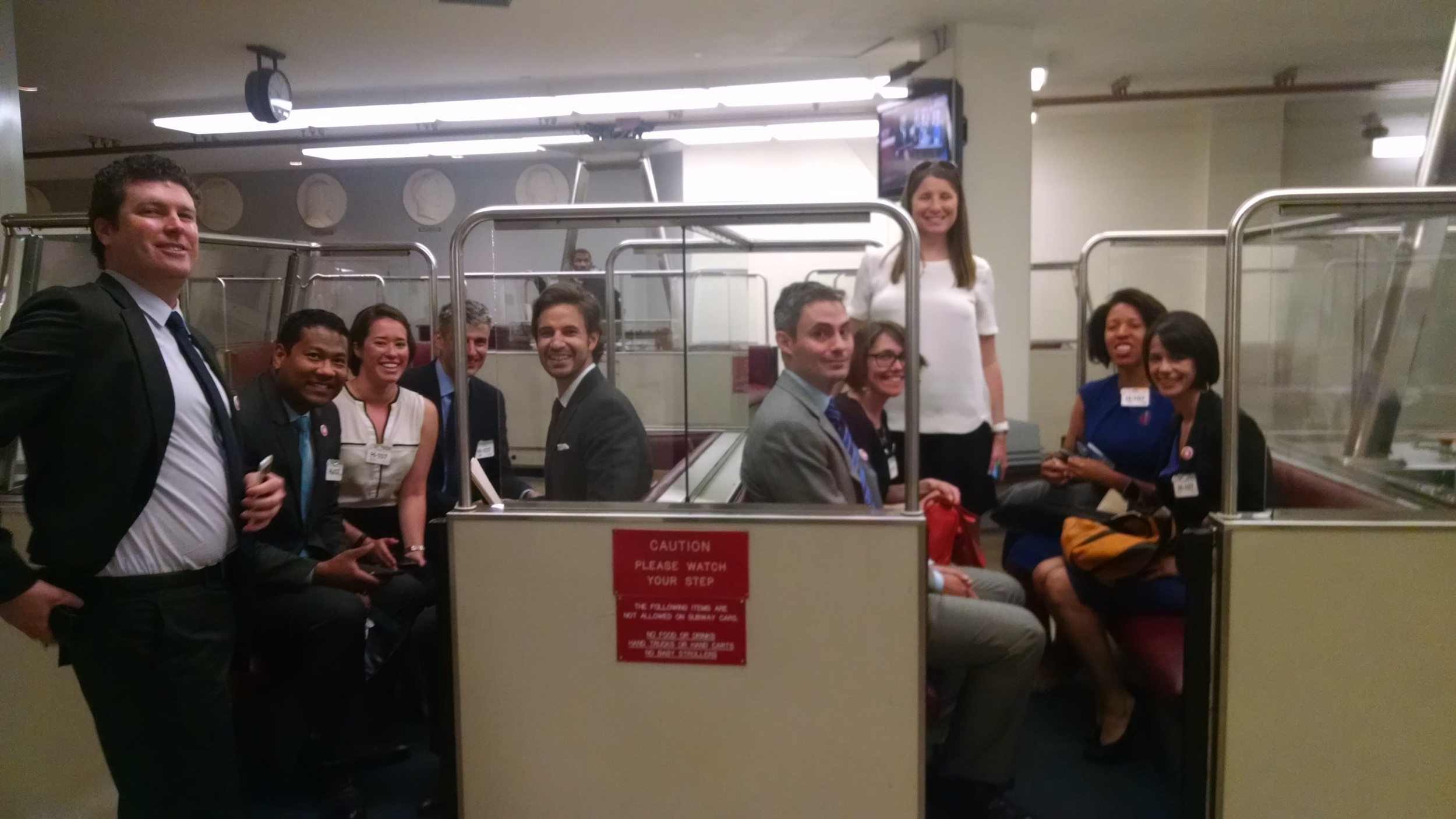New York City is considering legislation that would halt the growth of the for-hire-vehicle industry, including--and especially--startups that use technology to connect riders with rides. Local leaders have generally worked hard to support innovation, but policies like this have the potential to undermine those efforts. The following is an explanation of how the bill would work, and why Engine opposes it.
Of all the disruptive technologies to emerge in the last few years, it seems ridesharing and for-hire-vehicle (FHV) applications have been subject to some of the most heated policy debates in cities around the globe. We’ve seen this on display in New York City, where the Taxi and Limousine Commission (TLC) recently proposed rules that had troubling implications for application developers in almost any area of tech.
Fortunately, after hearing concerns from startups and organizations like Engine, the TLC updated those rules in ways that protect both startups and riders. But fresh on the heels of that positive resolution, the New York City Council introduced legislation that could threaten the future of transportation innovation in the city.
New York City has a booming startup economy, and government officials have worked very hard to support innovation. It would be hard to argue that a single policy would spark a mass exodus of entrepreneurs from the five boroughs. But policies like these do send a message that reverberates through the larger startup community, a message about what kind of environment New York wants to create, and how much local leaders are willing to listen to our community’s voice. And it certainly sends a message to anyone who wants to innovate within regulated industries - not just transportation, but health care, finance, and education - about whether they can really start and grow and thrive in a city like New York.
New Legislation
Two connected bills have been introduced by the City Council. The first bill, Intro 847, would require the Mayor's office to produce a study on what impact, if any, a recent increase in the number of FHV licenses had on traffic and pollution in the city. While we question the presumption that any noted decrease in average vehicle speeds must be the result of an increase in FHVs, we certainly support the city doing a comprehensive study to inform future transportation policy decisions. And in fact, the TLC and Department of Transportation have already begun work on such a study prior to any legislative mandate.
But it's the second bill, Intro 842, that is the greater cause for concern in the startup community. This bill would essentially freeze the number of FHVs currently on the road by capping the number of vehicles that can be affiliated with TLC-licensed bases, which, among other things, would disproportionately harm the smallest startups. Here’s where it’s helpful to know a bit about the way FHVs are currently regulated in New York City.
How FHVs are Regulated
There are two main types of FHV licences issued by the TLC. The first is called a medallion, and it allows a vehicle to accept street hails. Yellow medallion cabs can pick up riders anywhere, but the vast majority tend to serve Manhattan south of 96th street where density and demand are highest. The relatively new green medallion cabs can pick up riders anywhere except for that central business district and the airports. The number of medallions available is capped by local law, and periodically (if it believes there is sufficient rider demand) the City will put additional medallions up for auction.
The second type of licence is issued to livery cabs, limousines, and black cars. These vehicles cannot accept street hails. Instead, they can offer pre-arranged trips (like a ride to the airport) or contract with businesses and individuals to provide private transportation (like a law firm that offers employees rides home). Any FHV operating in the city must be affiliated with a livery, limo, or black car base, and it is through that base that they are licensed by the TLC.
Unlike medallions, these licenses are not currently capped. They also do not dictate how many different drivers can drive an individual vehicle, nor do they require that a vehicle drive only for the business associated with its base. Startups like Uber, Lyft or Via own bases through their subsidiaries, as do traditional livery companies like Dial 7 and Carmel, along with hundreds of small community providers. But a driver that owns a vehicle licensed through an Uber base can drive for Lyft, a Lyft car can drive for Dial 7, a Dial 7 car can drive for Uber -- and many drivers take rides through multiple companies throughout the day.
How the Vehicle Cap Would Work
Intro 842 would cap the number of new vehicle licences issued to any livery, limo, or black car base, whether a traditional provider or a high-tech startup. The cap is determined by the number of vehicles affiliated with a base as of June 15, 2015. If a base has 500 or more affiliated vehicles, it can only increase its total number of licenses by one percent. If it has between 20 and 499 vehicles, it can grow by five percent. And if it has less than 20 vehicles, it can grow by 15 percent. The cap would remain in effect until August 31, 2016, or until the traffic study is complete, whichever came first.
This may seem like a structure that favors smaller operators - until you actually run the numbers. Under the cap as proposed, a base of 500 vehicles would be able to add just five more vehicles in the next year. A base of 50 vehicles would be able to add just three vehicles, and a base of ten could add just two. So across the board we’d see negligible growth among any single base operator and throughout the industry.
What This Means for Startups
New York City has every right to evaluate traffic and take steps to alleviate congestion. But while the proposal to cap the number of new FHVs is likely well-intentioned, we believe it is misguided and will create a number of adverse impacts.
Media coverage of Intro 842 has generally framed this as a battle between Uber and the City -- and understandably so, given Uber currently accounts for the majority of app-based FHV rides in the five boroughs. But while this would obviously have a negative impact on Uber’s ability to expand its bases, we’re concerned that it will have a disproportionately damaging effect on smaller companies, and make it all but impossible for new startups to enter the market in NYC. In fact, by forcing everyone to compete for a limited supply of fluid labor even as demand for rides continues to grow, it has the potential to create an even greater monopoly within New York’s FHV industry.
It will have a particularly negative effect on small, home-grown startups like Via, a NYC-based service that provides shared rides within the city’s central business district. And it also means anyone with a great idea that could become the next Via, or the next Lyft or Uber, can’t start that business in NYC - certainly not in the next year, and possibly not ever.
Intro 842 won’t just impact businesses; it will also impact riders and other residents. It will slow or stall the expansion of ridesharing services that are likely to reduce congestion and make rides more affordable. It will also slow the expansion of FHVs into communities that remain underserved by traditional services, especially in the outer boroughs.
The City has argued that it can’t produce an accurate traffic study unless it holds the number of FHVs constant, a claim that simply doesn’t hold up. Analysts of all kinds are constantly studying snapshots of systems in flux, and no one claims that their findings are invalid simply because those systems have continued to evolve. And the City’s traffic study wouldn’t hold other variables constant, such as increases in both tourism and city residents, changes in streetwork or construction, or growth in the number of bicycles on the road.
The City has previously demonstrated a willingness to work collaboratively with the startup community towards smart regulations, as evidenced in the TLC rulemaking process just a few weeks ago. And the goal of alleviating congestion and the resulting traffic and pollution is a noble one. But the City seems to be conflating correlation with causation.
A vehicle cap is a blunt policy instrument that will likely stall or kill the growth of ridesharing services, which could actually take vehicles off the road and reduce congestion in the long term. Policy makers should postpone any movement of Intro 842 and instead work with the startup community and all stakeholders towards a better solution.





















